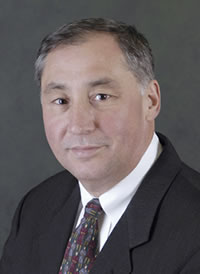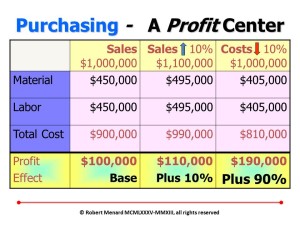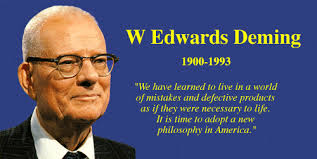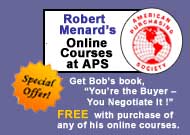
Robert Menard
Certified Purchasing Professional,
Certified Professional Purchasing Consultant, Certified Green Purchasing Professional, Certified Professional Purchasing Manager
The first half of my career was invested in the engineering and construction industry. I graduated as a Civil Engineer and promptly went into business as a general contractor self-performing several tradition sub trades . This was followed by service as a Construction Manager (CM) for Fee Only. All of this was very satisfying work, particularly the CM work which was far less price focused and more skills, services, and value oriented. While I did not know it at the time, this experience was a real life laboratory for developing negotiation skills. Since transitioning to the speaking, education and training industry, the experience and expertise gained in construction has accrued to the benefit of my construction industry clients. Here is a partial list of construction industry client associations and individual companies.
List of Construction Industry Clients
ASSOCIATIONS
- CFMA Construction Financial Management Association
- SWRI Sealant, Waterproofing and Restoration Institute
- CPCI Canadian Precast Prestressed Concrete Institute
- ICPI Interlocking Concrete Pavement Institute
- NPCA National Precast Concrete Association
- MCPX Manufactured Concrete Products Expo
- PCI Precast/Prestressed Concrete Institute
- NUCA National Utility Contractors Association
- SMACNA Sheet Metal and Air Conditioning Contractors’ National
- DASNY Dormitory Authority of the State of New York
- PCA The Portland Cement Association
- PAMCANI Plumbing and Mechanical Contractors Authority of Northern Illinois
COMPANIES
- · World of Concrete
- · Fabcon
- · Heidelberg Cement Group
- · Mack Industries
- · Energia Petrobras
- · Schlumberger
- · Reynolds, Inc.
- · Woodworkers Supply
One common thread that runs throughout the construction industry as concerns negotiation is that of price. It is a price dominated industry. In many bid situations, particularly publicly bid work, price is the only criterion. Even though all units of government allow themselves the “out” of language such as “lowest responsible bidder”, it is very rare that a low bidder will be thrown out, largely due to the risk of inviting lawsuits that stop the project in its tracks and ultimately increasing the price once litigation is resolved. Curiously, the end result is not much different in many private bid situations. The focus on low price even is so strong, that even when the low bidder is notorious for its poor performance, the awarding authority (owner, general or sub-contractor) usually resorts to the tired tactic of trying to force competitors to chase the bad number of the irresponsible bidder because the “price was on the street”. This means that the low price was carried in order to win the job. We call this the Hot Potato tactic in negotiation.
In future posts, we will discuss specific situations and possible solutions, including partnering.







